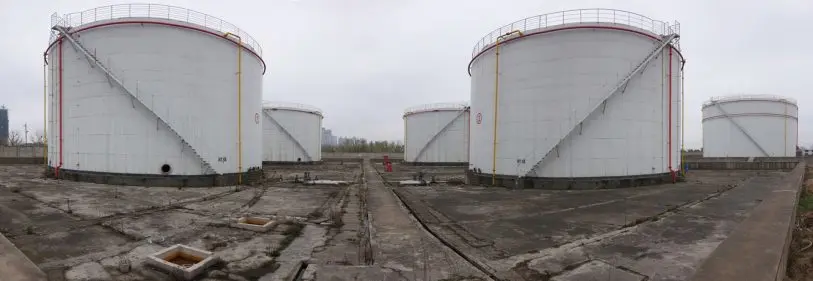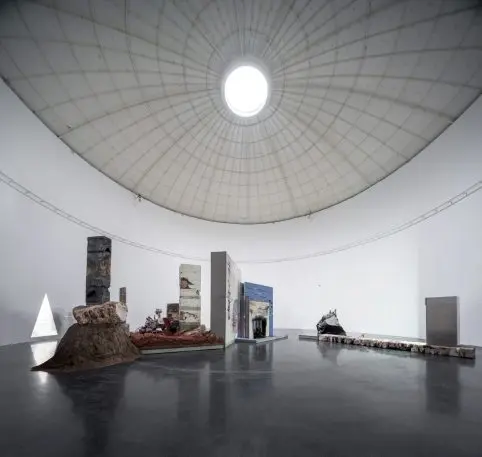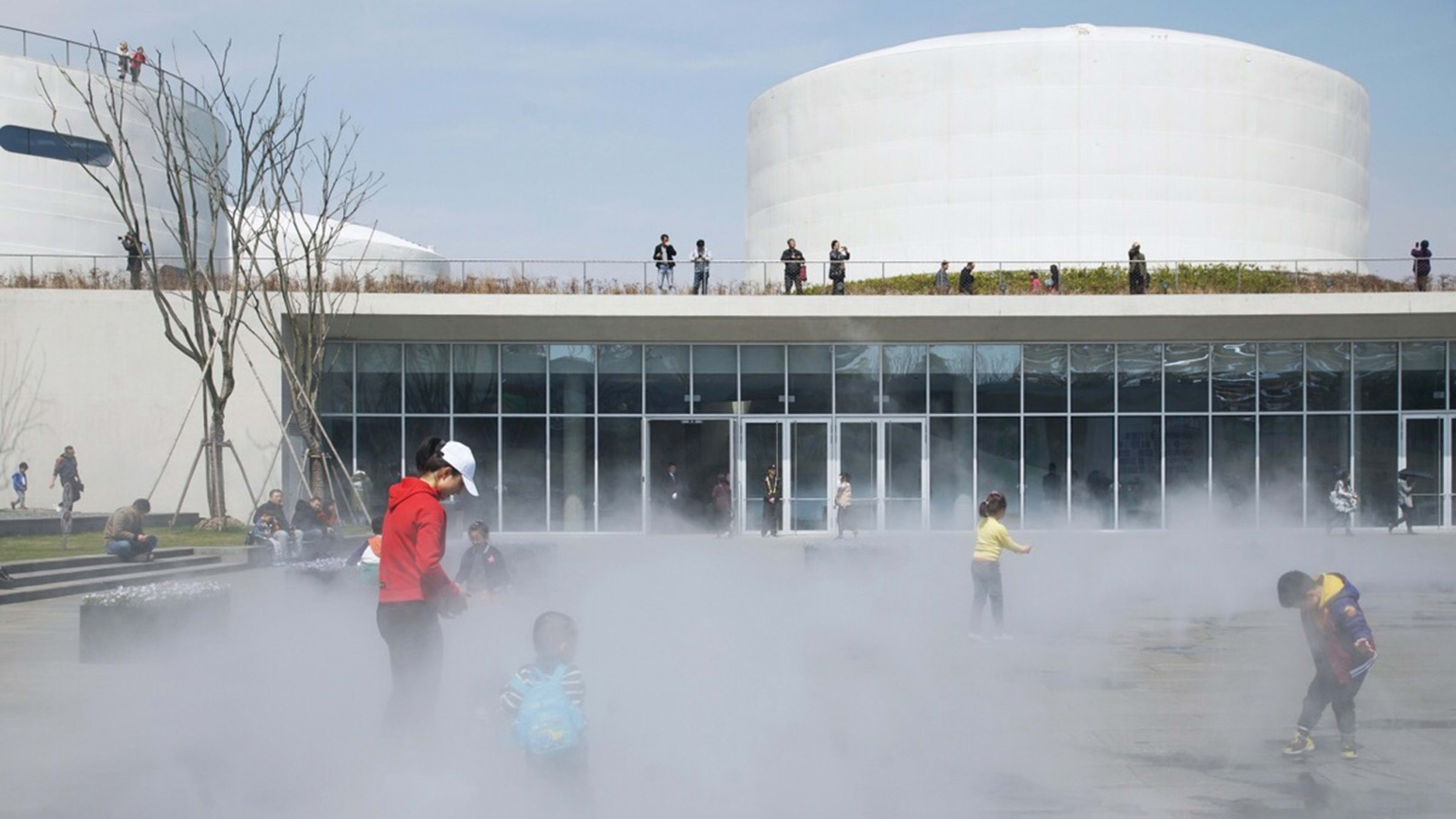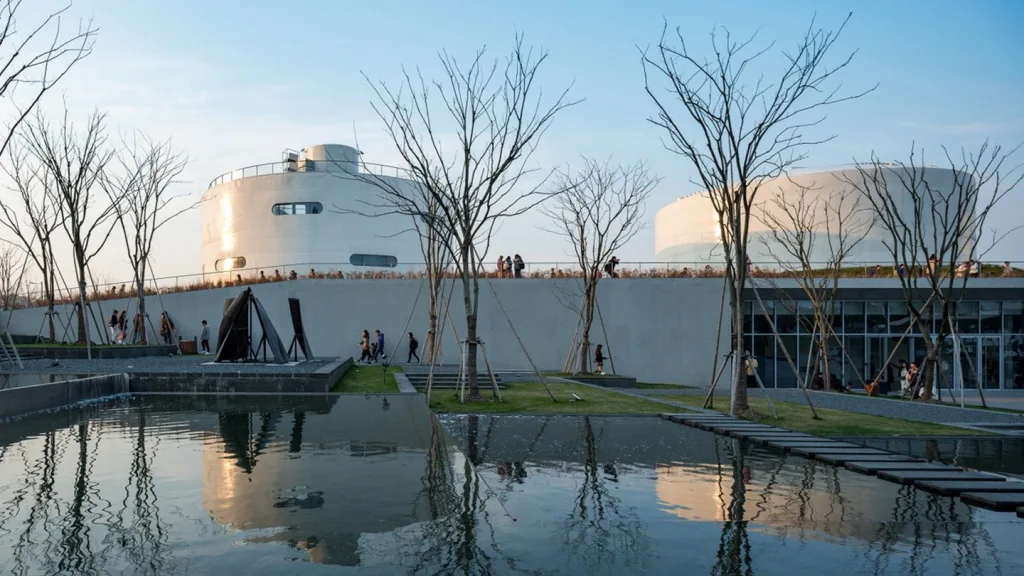You’ve probably seen aviation fuel containers at the airport: those giant, rusty cylinders, usually painted white. It’s hard to believe that such ugly structures could be turned into a beautiful art space like Tank Shanghai.
Designed by American-Chinese studio Open Architecture, this cultural center was made from five decommissioned oil containers and a pool for fire-fighting at the Longhua Airport, all sitting a on a stretch of the Huangpu River, in Shanghai.

The firm joined these industrial relics into a single 646,000-square-foot cultural center using a structure that rises above ground level, embracing the existing tanks. The structure—which the architects call “super-surface”—undulates with green spaces that people can enjoy. Under the greenery, the space connects to the containers. Two of the tanks are giant spaces for large installations and single exhibitions. The remaining three have multiple levels for different exhibitions.
I spoke via email with Open Architecture’s founders Li Hu and Huang Wenjing. They explained that project’s origin goes all the way back to 1930, when Longhua Airport was built. Back then, it was Shanghai’s main airport, but in the 1950s, it was shut down, falling into abandonment and disrepair.
“The transformation of that abandoned site into what is now Tank Shanghai began more than six years ago,” they wrote in an email. That’s when the government of the Shanghai’s West Bund district launched a new planning initiative. The idea was to transform all the industrial sites abandoned along the Huangpu River into new cultural and green spaces. The district approached Open Architecture in 2013 to transform the Tank Shanghai site into a contemporary art and cultural center.

As with any large-scale project, they encountered some roadblocks along the way. For example, there is a major under-river traffic tunnel, which diagonally cuts through the site. Their project couldn’t add additional load to the ground or even reduce the existing load. The authorities also decided to build a heliport next to the site (hello, noise pollution), and its boundaries changed as the Tank Shanghai project developed.
“Another challenge was the structure of the tanks themselves,” Li and Huang said. “Although they were originally made of thick plates of steel and are still very strong, as a precautionary measure the structural engineers determined that no new structure was to be supported by the tanks, since they were not able to precisely model and simulate the load-bearing capacities of the old tanks.”
That’s when they had the idea of creating the “super-surface.” This structure had to join the tanks without touching the tanks. If you look at the images, you can see the gap between the super-surface and the tanks in the form of a skylight perimeter.

The super-surface acts as a welcoming park area, with tall grass, trees, water features, and birds. The exhibition spaces are the heart of this park, either under it or intertwined with it. The Central Park inspiration wasn’t just abstract: There are specific details that draw inspiration from Central Park. One of them, they say, is the protruding box on one of the tanks that forms a stage for outdoor performances. According to them, this was influenced by Central Park’s Rumsey Playfield SummerStage.
Now perhaps New York can take some inspiration from Shanghai: the LaGuardia and JFK airports would be a good place to start.
Recognize your brand’s excellence by applying to this year’s Brands That Matter Awards before the early-rate deadline, May 3.





